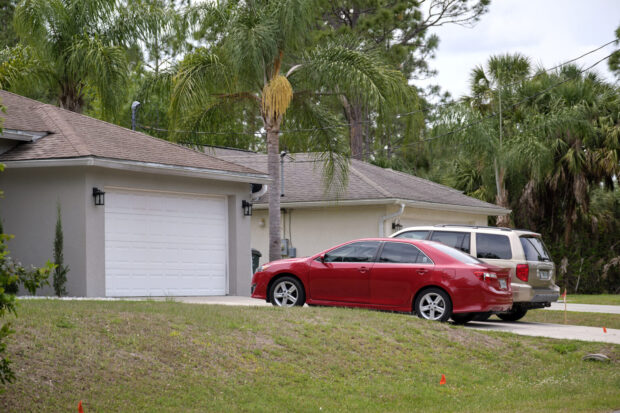Progressive offered a rare look inside its strategic playbook in a recent second-quarter earnings report. Describing the firm’s market share in key customer segments, the report highlighted one group as its most significant growth opportunity. They are called the “Robinsons,” and if you’ve listened to any recent interviews with Progressive CEO Tricia Griffith, you will likely have heard about them.
The Robinsons are a segment of the property and casualty (P/C) insurance marketplace that includes households who own a home and a car and place the insurance on both with the same insurer as a bundle.
Any bundle of Home+Auto will do—even if the household has two cars and two drivers, or one car and one driver, or three cars and three drivers. They all represent the ideal scenario for lifetime value in the eyes of big insurers like Progressive. By bundling auto and home policies for these Robinson families around the nation, insurers unlock the secret formula for retention, advocacy and steady growth, while perhaps only bearing the expense of taking one onboarding process.
J.D. Power data corroborates this theory. By analyzing data from our annual Auto Insurance Study, which is now in its 22nd year of publication, we were able to find that customers in this Robinsons segment are incredibly lucrative for insurers. Specifically, we found that customer intent to renew with their current insurance provider is 53 percent among the Robinsons—significantly higher than any other customer segment.
This group also has the longest tenure with their current carrier of any other segment, with 45 percent of Robinsons having been with their insurance provider for 11 years or more. Additionally, 41 percent of Robinsons select their carrier in order to bundle home and auto policies, creating a Holy Grail scenario for insurers.
That ability to deepen a relationship at the household level for decades is what insurance executives have in mind when they speak about customer lifetime value.
Future of the Robinson Family in Question
While the concept of segmenting and targeting specific insurance personas is nothing new, the industry’s obsession with this segment of potential super bundlers is particularly noteworthy right now because their very existence is at risk. You see, for all the talk of ideal customer profiles, current market dynamics are threatening to break up the Robinsons.
A toxic combination of record high numbers of serious collisions, skyrocketing used-vehicle valuations and surging repair costs have steadily driven auto premiums higher, sending record numbers of Robinsons back to the marketplace to shop for new, cheaper policies. According to our data, quotes on new auto insurance policies have increased 11.8 percent during the past quarter. Worse, we’ve found that rampant customer frustration with rising auto premiums is driving significant declines in customer satisfaction with home/auto bundles. In fact, 31 percent of bundlers now say they “definitely will” switch their home insurer if they switch their auto insurer after an insurer-initiated auto premium increase.
Meanwhile, more auto insurance customers than ever are turning to usage-based insurance (UBI) policies to lower their monthly payments. Participation in UBI programs has doubled since 2016, with 16 percent of auto insurance customers now participating in such programs.
The combined effect of these disruptions to the status quo in the P/C space is a fragmentation of the ultra-valuable Robinsons segment. In theory, that Robinsons family tree, which currently represents an opportunity to bundle a car and a home policy, and maybe even some life insurance and “toy” policies on things like motorcycles and boats, runs the risk of migrating into a less valuable, less loyal segment.
Targeting Lower Value Customer Segments
Progressive has names for these segments, too. There are the “Wrights,” who look just like a Robinson, except they are not bundling; the “Dianes,” who rent and have any car and any driver; and the “Sams,” who seem to only have car insurance, are monoline auto policy shoppers but can have multiple cars. Perhaps not surprisingly, customer loyalty and total lifetime value declines for each segment, with the Wright family typically renewing with the same carrier at a rate of 45 percent, and Dianes and Sams showing the highest degrees of price sensitivity and inclination to shop for a new insurer.
It’s clear from Progressive’s strategy playbook that every savvy multiline personal insurance carrier would much rather bundle the Robinson family tree than watch them unbundle themselves to take advantage of lower-cost UBI programs. But the current dynamics of the marketplace may have other plans. That puts the focus for insurers squarely on the overall brand experience their customers are receiving—across all lines—and on understanding how changes in one area, such as telematics adoption in an auto policy, can affect the entire customer journey. Bundling small businesses is now a thing, too.
If insurers are going to increase their market share in the valuable Robinsons segment, they’re going to need to track every aspect of the Robinson customer experience and act quickly to address any gaps where they could be losing them to cost pressure or some other variable. In the long run, having loyal customers with multiple policies helps grow total premium faster and with less expenses. Keeping the Robinsons happy means that insurers are going to need to adjust course from their current path, to be household-centric vs. product-centric.
*This article was originally published by Insurance Journal, CM’s sister publication.





















 Expense Ratio Analysis: AI, Remote Work Drive Better P/C Insurer Results
Expense Ratio Analysis: AI, Remote Work Drive Better P/C Insurer Results  NOAA Announces Latest AI-Driven Global Weather Models
NOAA Announces Latest AI-Driven Global Weather Models  10 Highest Class-Action Settlements in 2025 Eclipsed $70B Total: Duane Morris
10 Highest Class-Action Settlements in 2025 Eclipsed $70B Total: Duane Morris  Slideshow: Carrier Management’s 2025 Top Editor’s Picks (Unlocked)
Slideshow: Carrier Management’s 2025 Top Editor’s Picks (Unlocked) 
